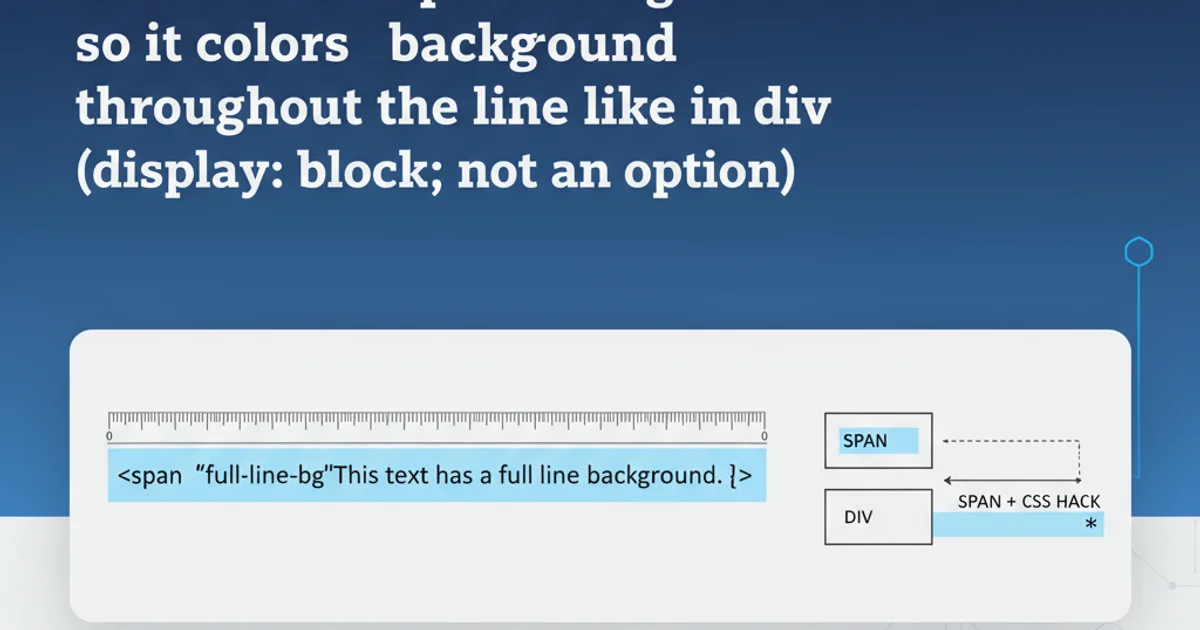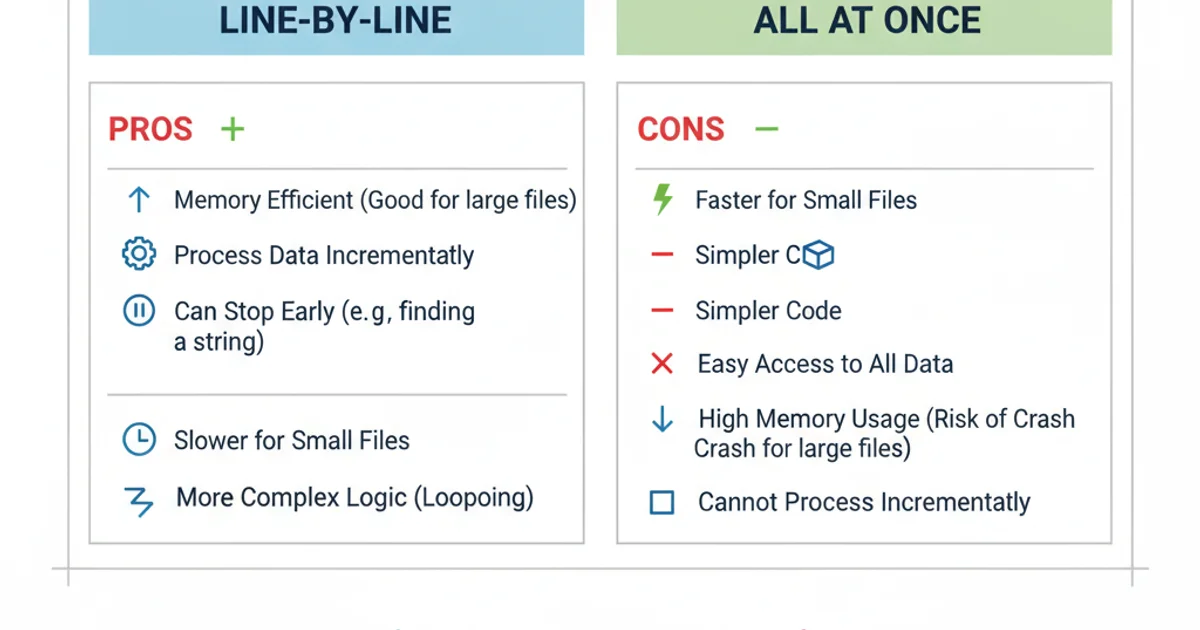How to read a file line by line or a whole text file at once?
Categories:
Efficient File Handling in C++: Reading Line by Line or All at Once

Learn how to read text files in C++ using fstream for both line-by-line processing and loading the entire file content into memory, with practical examples and best practices.
Reading data from files is a fundamental operation in many C++ applications. Whether you need to process a configuration file line by line, or load an entire text document into a string for manipulation, C++ provides robust tools through its fstream library. This article will guide you through the common methods for reading files, highlighting their use cases and providing clear code examples.
Understanding File Streams in C++
The fstream library in C++ is part of the Standard Library and provides classes for file input and output operations. The primary classes you'll interact with are ifstream for input (reading from files), ofstream for output (writing to files), and fstream for both. Before performing any file operation, it's crucial to include the <fstream> header.
When working with files, always remember to check if the file was opened successfully and to close the file stream once you're done to release system resources. Modern C++ practices often leverage RAII (Resource Acquisition Is Initialization) where file streams are automatically closed when they go out of scope, but explicit checks are still vital.
flowchart TD
A[Start] --> B{Open File Stream?}
B -->|No| C[Handle Error & Exit]
B -->|Yes| D{Read Mode?}
D -->|Line by Line| E[Read Line]
E --> F{End of File?}
F -->|No| E
F -->|Yes| G[Close File Stream]
D -->|All at Once| H[Read All Content]
H --> G
G --> I[End]Flowchart of C++ File Reading Process
Method 1: Reading a File Line by Line
Reading a file line by line is ideal for processing large files that might not fit entirely into memory, or when you need to parse data record by record. The std::getline function is the standard way to achieve this, reading characters from an input stream until a newline character is found (or the end of the file is reached).
This approach is memory-efficient as it only loads one line into memory at a time. It's commonly used for log files, CSV parsing, or any scenario where each line represents a distinct piece of information.
#include <iostream>
#include <fstream>
#include <string>
int main() {
std::ifstream inputFile("example.txt"); // Open the file
if (!inputFile.is_open()) { // Check if the file was opened successfully
std::cerr << "Error opening file!\n";
return 1;
}
std::string line;
int lineNumber = 0;
while (std::getline(inputFile, line)) { // Read line by line
lineNumber++;
std::cout << "Line " << lineNumber << ": " << line << "\n";
}
inputFile.close(); // Close the file stream
return 0;
}
C++ code to read a text file line by line.
inputFile.is_open() after attempting to open a file. This ensures your program doesn't try to read from a non-existent or inaccessible file.Method 2: Reading an Entire File at Once
Sometimes, you need the entire content of a file loaded into a single string or buffer. This is useful for smaller configuration files, templates, or when you need to perform global string manipulations. There are several ways to achieve this, but a common and efficient method involves using stream iterators or reading the entire buffer into a string.
This method is generally faster for smaller files as it avoids the overhead of repeated getline calls, but it consumes more memory as the entire file content is held in RAM.
#include <iostream>
#include <fstream>
#include <string>
#include <sstream> // Required for std::stringstream
int main() {
std::ifstream inputFile("example.txt");
if (!inputFile.is_open()) {
std::cerr << "Error opening file!\n";
return 1;
}
// Read the entire file content into a stringstream
std::stringstream buffer;
buffer << inputFile.rdbuf();
// Get the string from the stringstream
std::string fileContent = buffer.str();
std::cout << "--- File Content ---\n";
std::cout << fileContent << "\n";
std::cout << "--------------------\n";
inputFile.close();
return 0;
}
C++ code to read an entire text file into a single string.
Choosing the Right Method
The choice between reading line by line and reading the entire file depends on your specific requirements and the characteristics of the file. Here's a quick guide:
Line by Line:
- Pros: Memory efficient, suitable for very large files, good for processing structured data where each line is a record.
- Cons: Can be slower for small files due to function call overhead, requires more complex parsing if lines need to be combined.
All at Once:
- Pros: Simpler code, potentially faster for small to medium files, convenient for global string operations (e.g., search and replace).
- Cons: Memory intensive, not suitable for very large files, can lead to performance issues if the file is frequently accessed.
Consider the trade-offs between memory usage, performance, and code complexity when making your decision.

Comparison of file reading methods.